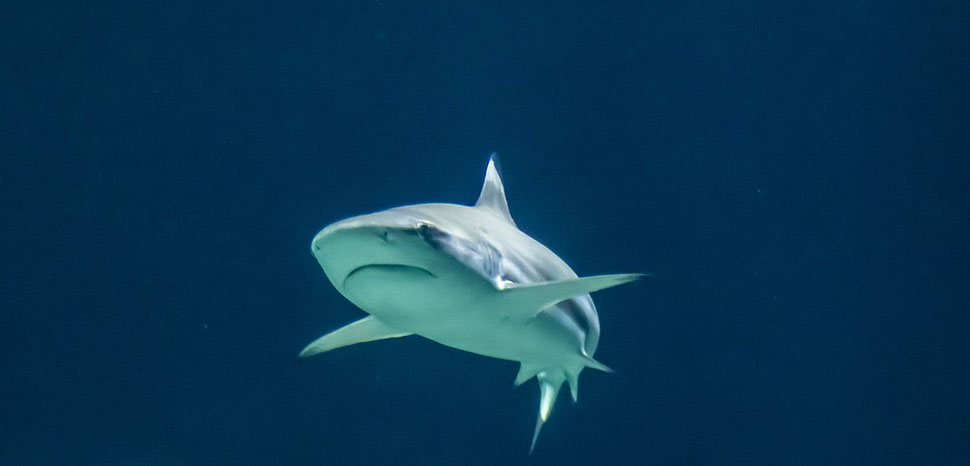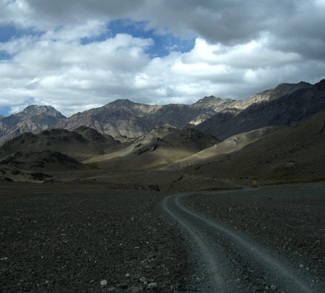The summer blockbuster movie, The Meg 2: The Trench, focuses on prehistoric sharks, among other sea creatures, battling against Jonas, portrayed by Jason Statham, and his friends. A side plot of the movie concerns a particularly topical issue in the real world: seabed mining.
A Quick Summary…
This section contains minor spoilers about The Meg 2. When Jonas and his teammates cross the thermocline to reach the bottom of the Pacific Ocean, where the megalodons live, they come across a rogue seabed mining operation. Subsequent scenes show how the “bad guys” are mining the seabed for unspecified “rare earth metals; “this box alone could be a billion dollars,” said one character.
During the movie’s mandatory exposition by the villain, the CEO of the fictitious X-Pletandum Technologies Hillary Driscoll (played by Sienna Guillory), she explains her plans to farm the seabed for rare earths, regardless of the environmental destruction. “Before you start whining about the ecosystem, who cares? We’ll make billions. And no one is going to see the damage we do,” she brags. She has also hired mercenaries for this operation; the group leader has no problem sacrificing his workers by blowing up a ridge with explosives where the minerals are located.
Defense and Geopolitics
Seabed mining, also called deep seabed mining or deep-sea mining, for critical minerals and rare earths, has other components to consider besides environmental protection. Geopolitics, including great power competition, must also be taken into consideration. Thea Dunlevie, Senior Analyst at the Center for Maritime Strategy (CMS), authored an early-September commentary on this topic, where she remarks: “Great power competitors including China and Russia are among the dozens of countries greatly invested in the hunt for seabed minerals, found coating sea ridges and mountains, in deposits of minerals near hypothermal vents, and within polymetallic nodules.”
Dunlevie also warns that the U.S. is “falling behind Russia and China in the race towards seabed mining.” The analyst notes that the Jamaica-based International Seabed Authority (ISA), the international agency tasked with regulating seabed mining, has issued 31 exploration licenses, including five contracts to China and four to Russia, while the United States has zero. Moreover, the U.S. is only an Observer at the ISA, while China and Russia are full members. These facts put Washington at an obvious disadvantage compared to its competitors.
The analyst goes on to recommend that “the U.S. should increase its engagement in the ISA … Even if the U.S. does not become a full member of the ISA, it should still increase its influence through American entities like NGOs and academic institutions.” Moreover, Washington should “expand critical mining partnerships with allied Member States, like Norway.” For example, U.S. companies can indirectly participate in seabed mining exploration and extraction via international corporate partnerships.
The CMS essay is not the only recent analysis by a defense & security research center about the link between seabed mining, geopolitics, and defense issues. In a 2021 analysis for the Center for International Maritime Security (CIMSEC) titled “Seabed Mining: The Coast Guard’s Deep Future,” Lieutenant Kyle Cregge, a surface warfare officer, discussed the future role of seabed mining in the U.S. Coast Guard’s future strategy and operations. “The service should prepare for seabed mining by engaging with allies and partners and by supporting scientific research and environmental protection,” Lieutenant Cregge recommends.
Why is the U.S. Coast Guard the preferred service for these operations compared to the U.S. Navy? For example, Lt Cregge argues that “seabed mining requires a coordinated surface support infrastructure akin to hydrocarbon exploration and extraction,” all oversight activities that the USCG is aware of. Moreover, the U.S. officer argues: “While seabed resources are not living, domestic and international law similarly govern their extraction – and mining will require the same sort of maritime regulation. American domestic justification follows from the 1980 Deep Seabed Hard Mineral Resource Act (DSHMRA), which claimed the right of the U.S. to mine the seabed in international waters, and specifically identifies the Coast Guard as responsible for enforcement.”
While the above examination still stands out as a rarity, as exploration of the global seabed expands in the coming years, similar analyses by other military and maritime law enforcement agencies will likely be published. Just like unmanned aerial vehicles and loitering munition have changed global warfare, seabed mining will affect navies’ and coast guards’ future strategies and priorities.
The Future of Seabed Mining
The wealth of critical minerals and rare earth elements in the depths of the global oceans continues to be studied and reported on. For example, in an area of the Pacific Ocean floor known as the Clarion-Clipperton Zone (CCZ), between Mexico and Hawaii, there are polymetallic nodules that contain metals, like cobalt, copper, and nickel, while rare earth elements “crucial for clean energy technologies; and smaller amounts of lithium, in high demand for batteries.”
There are also companies which are already eagerly attempting to mine the seabed: a prime example is the Vancouver, Canada, outfit The Metals Company (TMC), which is teaming up with the government of Nauru to mine the tiny Pacific country’s seabed for minerals and rare earths. The NORI-D Project has reportedly completed 18 resource evaluation and environmental baseline campaigns and expects to submit in the 2nd half of 2024 an exploitation contract application to the ISA. Project Zero, a small-scale commercial production, is expected to begin in 2025, while Project One, a large-scale production, will tentatively commence in 2026.
However, much to Nauru’s and The Metal Company’s chagrin, the international community remains ambivalent about how to proceed with seabed mining. A vital meeting at the ISA in Jamaica held in Jamaica did not result in a clear resolution about how to proceed with industrial-scale mining. A new round of discussions will take place in 2024. The week-long negotiations in Kingston were due to a proposal by “Chile, France, and Costa Rica, and backed by a dozen countries, to discuss a precautionary pause on deep-sea mining to ensure the protection of the marine environment.” According to media reports, China, unsurprisingly, is keen to move ahead with seabed mining. Regulations for seabed mining could be in place as early as 2025; however, apart from China, several other ISA-member states are reluctant to proceed.
Anecdotally, on 24 August, ISA posted a job offer for a consultancy position “to assist ISA in designing a project framework for the establishment of a pilot demonstration project for long-term ocean observations in the Clarion-Clipperton Zone.” While the job opening does not explicitly mention the NORI-D project by Nauru and TMC, one can assume it is no coincidence that ISA is looking to increase its knowledge about this specific area while negotiations over seabed mining are paused.
For the record, the villain in The Meg 2 does not disclose if the minerals mined in the megalodon’s habitat will be delivered to a specific client. Similarly, since the fictitious X-Pletandum Technologies’ mining operation is labeled “rogue,” we can assume that the ISA did not issue a permit. While seabed mining is in its early stages, just like illegal, unreported, and unregulated (IUU) fishing and illegal mining are global crimes, we can assume that IUU seabed mining will become a similar problem at some point in the future.
Conclusions
The quest for access to critical minerals and rare earths affects global geopolitics on land. It is only a matter of time before the seabed becomes the next hotspot for essential resources and tensions between global powers and other actors.
Resource-hungry countries like China, cash-strapped nations like Nauru, and private companies are well aware of the enormous profits from extracting critical minerals and rare earth elements that litter the ocean floor; these governments and mining companies are ready to commence seabed mining. However, a plethora of other nations and environmental organizations are concerned, and rightfully so, about the destructive environmental consequences of seabed mining. Regardless of whether deep sea mining operations begin in 2025, 2026, or in the 2030s, this activity will have defense and security angles, given how great power geopolitics will have a pronounced influence on mining.
The possibility of crimes being committed as part of seabed mining should also be considered. The illegal seabed mining operation in The Meg 2: The Trench occurs in the Pacific Ocean, somewhat close to China, far from U.S. jurisdiction. Hypothetical similar operations could happen closer to the U.S.; hence agencies like the U.S. Coast Guard will be involved, as the CIMSEC commentary argued.
The Meg 2’s universe does not deal with global geopolitics, great power competition, and the role of defense and security forces. However, in the real world, concerns about the future of seabed mining go beyond environmental. The next battleground for critical minerals and rare earth elements is (very deep) underwater.
Wilder Alejandro Sánchez is president of Second Floor Strategies, a consulting firm in Washington, D.C. He is an analyst who monitors defense & security, geopolitical, and trade issues across the Western Hemisphere, Eastern Europe, and Central Asia.
The views expressed in this article belong to the authors alone and do not necessarily reflect those of Geopoliticalmonitor.com.




